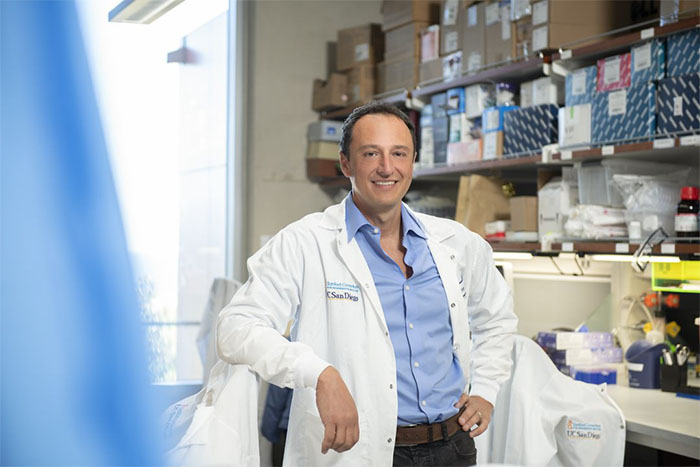Alysson Muotri’s lab has received funding to investigate a very rare, relatively new neurological condition. Photo Credit: UC San Diego
Alysson Muotri, PhD, a professor of pediatrics and cellular and molecular medicine at UC San Diego School of Medicine, has built a thriving research program investigating some of the toughest, rarest diseases at their most fundamental level, using stem cells and gene therapy to identify causative mutations and then repair them.
The DLG4 Research Fund recently provided him with a grant of up to $455,000 to investigate a rare condition most people have never heard of.
DLG4-related synaptopathy (sometimes called SHINE Syndrome), is a neurodevelopmental disorder characterized by global developmental delay/intellectual disability of varying severity, autism spectrum disorder, attention deficit hyperactivity disorder, hypotonia (loss of muscle tone) and epilepsy. Many individuals with DLG4 synaptopathy also present with sleep disturbances, skeletal abnormalities and/or structural brain abnormalities.
The syndrome is caused by variants in the gene DLG4, which encodes the protein PSD-95 that plays a major role in brain development and function in synaptic strength and plasticity.
SHINE syndrome is inherited in an autosomal dominant fashion. This means that only a single copy of the disease-associated mutation is enough to cause the disease. Most individuals with SHINE syndrome are found to have de novo (new) variants in DLG4, meaning the variant occurs for the first time in them and is not inherited from a parent. There are families, however, where there has been sibling reoccurrence of SHINE syndrome. It’s hypothesized that a phenomenon known as mosaicism (the variant is present in small amount of the parent’s cells, but all of the child’s cells) may be the cause.
Researchers are just learning about DLG4 synaptopathy. Prior to 2019, the DLG4 mutation was classified as a variance of unknown significance. The resulting condition is considered extremely rare.
Similar to earlier work, Muotri’s team will create brain cells from patients carrying DLG4 mutations, characterize those mutations and use gene therapy to see if they can rescue the phenotype. Such work is fundamental to developing a therapy for clinical trials.
Watch a video interview with Muotri here.
– Scott LaFee
